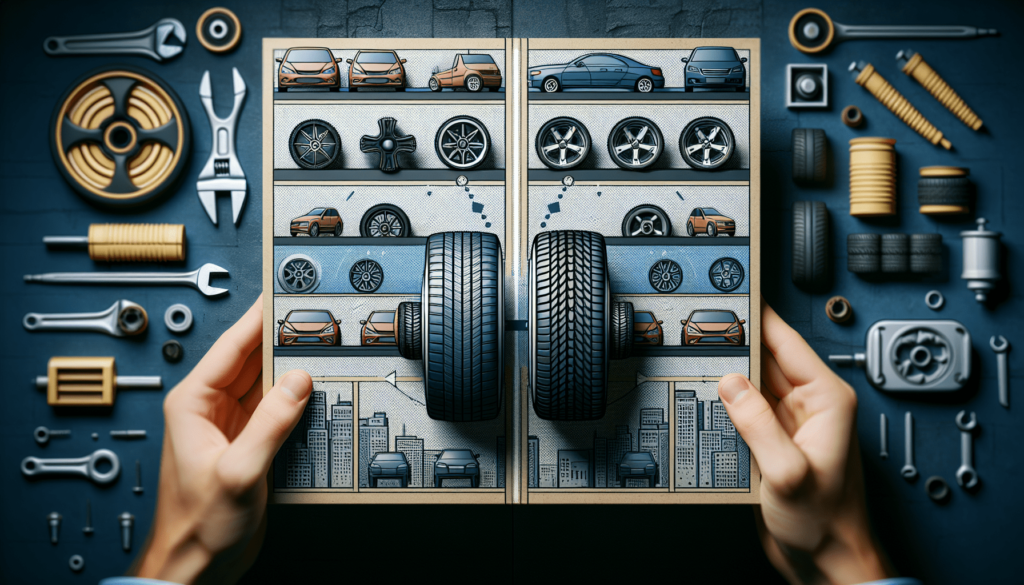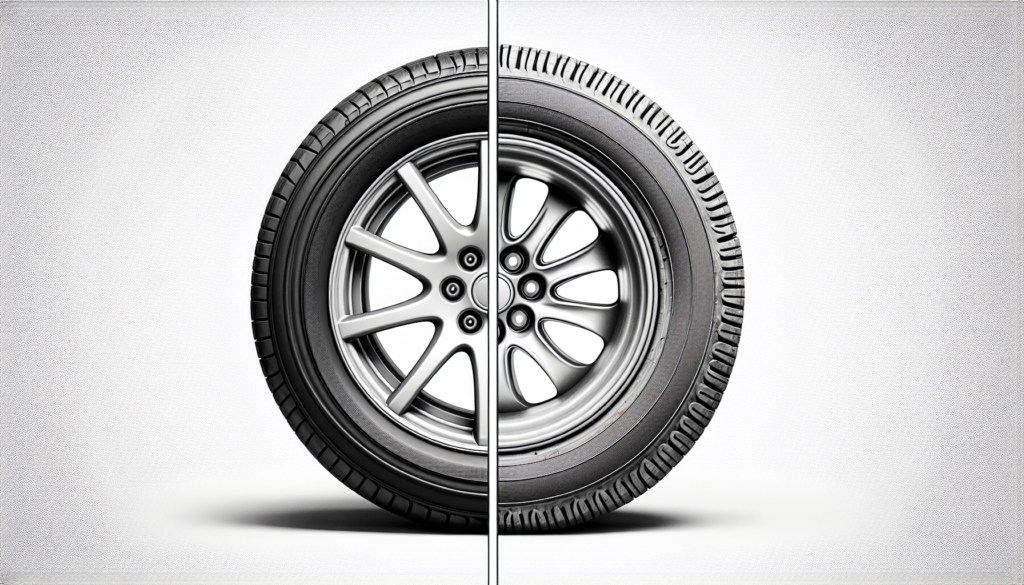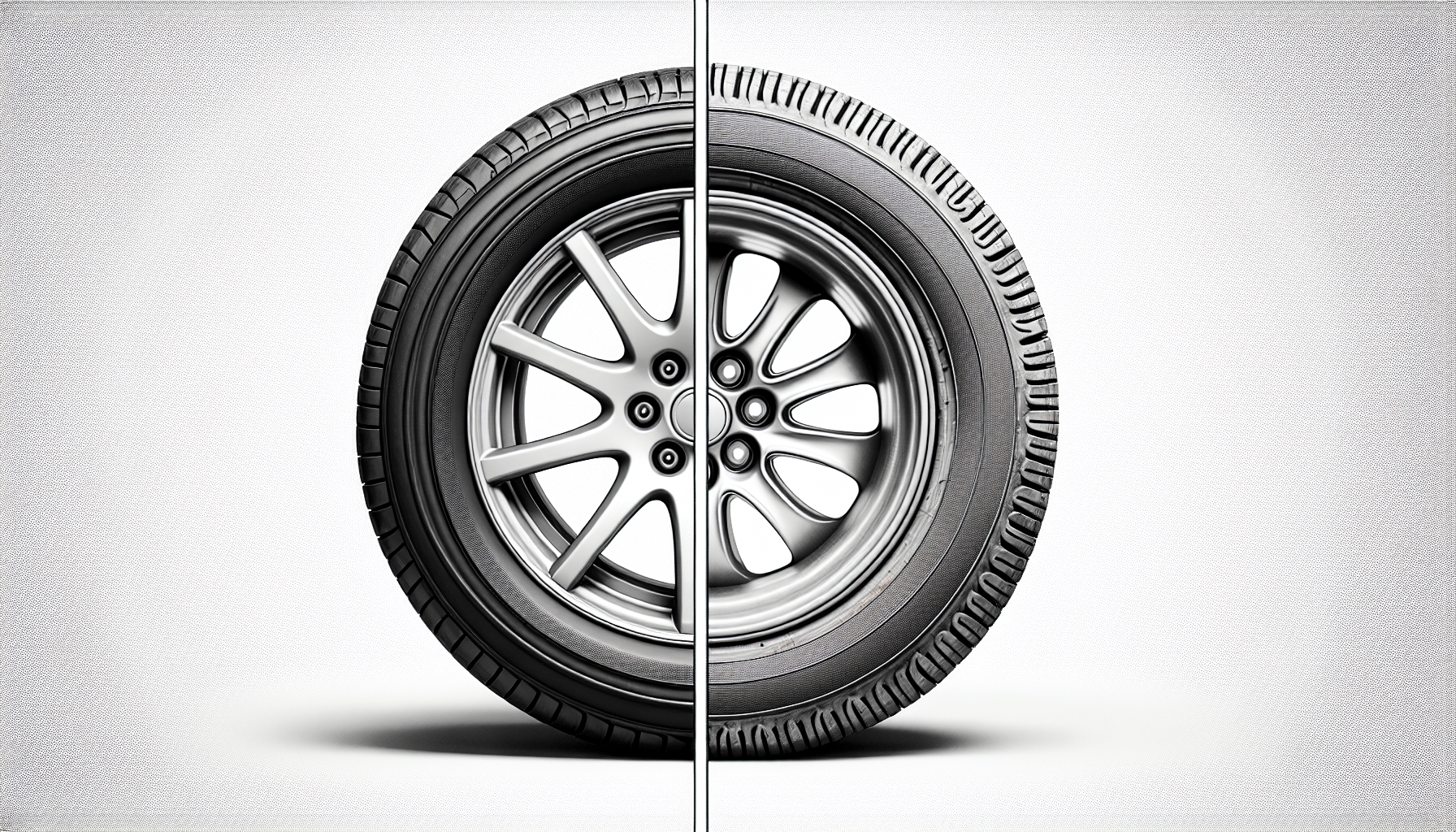You’re cruising down the road, enjoying the smooth ride of your car, but have you ever wondered what keeps your wheels in perfect harmony? In this article, we’ll explore the fascinating world of wheel alignment and tire balancing and unravel the mystery behind their differences. While these two terms may seem similar, they play distinct roles in ensuring an optimal driving experience. So, buckle up and prepare to discover the secrets of maintaining your car’s perfect balance!
Definition and Purpose
Wheel Alignment
Wheel alignment refers to the adjustment of the angles and position of the wheels to ensure that they are parallel to each other and perpendicular to the ground. It involves adjusting the camber, toe, and caster angles of the wheels. The main purpose of wheel alignment is to optimize the performance and safety of the vehicle by ensuring that the wheels are aligned correctly and evenly distributing the weight of the vehicle on the tires.
Tire Balancing
Tire balancing, on the other hand, refers to the equal distribution of weight around the circumference of a tire and wheel assembly. It involves attaching small weights to the wheel to counterbalance any heavy spots. The purpose of tire balancing is to eliminate any vibrations or shaking that may occur due to uneven weight distribution, resulting in a smoother and more comfortable ride.
Wheel Alignment
Importance of Wheel Alignment
Proper wheel alignment is crucial for several reasons. Firstly, it ensures that the vehicle’s tires wear evenly, which extends their lifespan and prevents premature wear. Additionally, wheel alignment improves steering response and handling, allowing for better control over the vehicle. It also enhances fuel efficiency by reducing rolling resistance. Overall, maintaining proper wheel alignment significantly contributes to a safer and more efficient driving experience.
Process of Wheel Alignment
A professional wheel alignment typically involves three primary adjustments: camber, toe, and caster. Camber refers to the inward or outward tilt of the tire when viewed from the front of the vehicle. Toe refers to the angle at which the tires point in or out when viewed from above. Caster refers to the angle of the steering axis when viewed from the side.
During a wheel alignment service, a technician will use specialized equipment to measure the current angles of the wheels and compare them to the manufacturer’s specifications. They will then make necessary adjustments to bring the angles into proper alignment. This may involve adjusting the suspension components, such as control arms, tie rods, or camber bolts.

Tire Balancing
Importance of Tire Balancing
Tire balancing is essential to maintain a smooth and comfortable ride. When a tire is not balanced, it can lead to vibrations or shaking, particularly at higher speeds. These vibrations not only affect the vehicle’s comfort but can also cause premature wear on various suspension components. By ensuring that the weight is evenly distributed around the tire and wheel assembly, tire balancing eliminates these vibrations and promotes better tire performance.
Process of Tire Balancing
To balance a tire, a technician will use a dynamic balancer, which consists of a spindle and a precision measuring device. The tire and wheel assembly is mounted onto the balancer, and the machine spins the assembly at a high speed. The measuring device then detects any areas where the weight is unevenly distributed. The technician will attach small weights to the wheel opposite these heavy spots to counterbalance the weight. This process is repeated until the tire and wheel assembly is evenly balanced.
Symptoms of Misalignment and Unbalanced Tires
Misalignment Symptoms
There are several symptoms that can indicate your vehicle may be experiencing wheel misalignment. One of the most common signs is uneven or excessive tire wear. If you notice that one tire is wearing down faster than the others, it may be a result of misalignment. Another symptom is a pulling sensation, where your vehicle tends to drift to one side while driving on a straight road. Vibrations in the steering wheel or the vehicle itself can also be indicators of misalignment.
Unbalanced Tire Symptoms
When your tires are not balanced properly, you may experience vibrations in the steering wheel that increase with speed. These vibrations are typically most noticeable between speeds of 50 and 70 miles per hour. In extreme cases, unbalanced tires can cause the vehicle to shake violently, affecting the overall stability and safety of the vehicle. You may also notice uneven or accelerated tire wear if your tires are not properly balanced.

Effects on Vehicle Performance
Wheel Alignment Effects
Improper wheel alignment can have several negative effects on vehicle performance. One of the most noticeable impacts is the reduction in steering responsiveness and handling. Misaligned wheels can cause the vehicle to feel unstable, especially during turns or when driving on rough surfaces. Additionally, misalignment can increase tire wear, leading to the need for more frequent and costly tire replacements. Fuel efficiency may also be negatively affected, as the resistance caused by misaligned wheels can cause the engine to work harder.
Tire Balancing Effects
Unbalanced tires can result in a range of negative effects on vehicle performance. The most common effect is vibrations, which can affect the comfort of the ride and the overall driving experience. These vibrations can also lead to increased wear on suspension components, such as ball joints and wheel bearings, reducing their lifespan. Unbalanced tires may also cause uneven tire wear, compromising the traction and handling of the vehicle. Additionally, the shaking caused by unbalanced tires can be distracting to the driver, impacting their focus and potentially compromising safety.
Frequency of Service
Wheel Alignment Service
It is generally recommended to have a wheel alignment service performed annually or whenever you purchase new tires. However, certain driving conditions and behaviors may require more frequent alignments. If you frequently drive on rough roads or encounter potholes, it is advisable to have your wheel alignment checked more often. Similarly, if you notice any of the symptoms of misalignment mentioned earlier, it is important to have your wheels aligned as soon as possible to prevent further damage and ensure optimal performance.
Tire Balancing Service
Tire balancing typically does not need to be performed as frequently as wheel alignment. It is generally recommended to have your tires balanced every 5,000 to 7,000 miles or whenever you notice any vibrations or shaking. Additionally, whenever you purchase new tires or have them rotated, it is a good idea to have them balanced to ensure an optimal ride quality.

Costs
Wheel Alignment Cost
The cost of a wheel alignment service can vary depending on several factors, including the location, the type of vehicle, and the specific alignment method required. On average, you can expect to pay between $50 and $100 for a standard wheel alignment. However, more complex or specialized alignments, such as those for high-performance vehicles or vehicles with adjustable suspension components, may cost more.
Tire Balancing Cost
The cost of tire balancing is generally more affordable compared to wheel alignment. On average, you can expect to pay between $10 and $20 per tire for a tire balancing service. Keep in mind that the cost may vary depending on the tire shop or service provider you choose, as well as any additional services or packages they offer.
DIY or Professional Service?
Wheel Alignment Options
While some basic wheel alignment tasks can be performed at home, such as adjusting the tire pressure and inspecting for visible damage, it is generally recommended to have a professional perform a comprehensive wheel alignment. Wheel alignment requires specialized equipment and knowledge to accurately measure and adjust the wheel angles. Professional alignment services ensure that the alignment is performed correctly and according to the manufacturer’s specifications, optimizing the performance and safety of your vehicle.
Tire Balancing Options
Tire balancing can also be performed by both professionals and DIY enthusiasts. There are portable tire balancing kits available for purchase that allow you to balance your own tires at home. However, these kits may not provide the same level of precision and accuracy as professional balancing machines. To ensure optimal results and a smooth ride, it is advisable to have your tires balanced by a professional who has the necessary equipment and expertise.

Safety and Tire Lifespan
Wheel Alignment Safety
Proper wheel alignment plays a significant role in ensuring vehicle safety. Misaligned wheels can cause the vehicle to handle poorly, making it more difficult to control in various driving conditions. This can increase the risk of accidents, especially during emergency maneuvers. Additionally, misalignment can lead to uneven tire wear, which can compromise the traction and stability of the vehicle, particularly in wet or slippery conditions. Regular wheel alignment services help maintain optimal safety levels by ensuring that your vehicle handles properly and maintains consistent tire contact with the road.
Tire Balancing Safety
While tire balancing does not directly impact safety as much as wheel alignment, it still contributes to a safer driving experience. Unbalanced tires can lead to vibrations and shaking that can distract the driver and affect their ability to maintain control over the vehicle. By eliminating these vibrations through proper tire balancing, you can enhance your overall safety on the road. Additionally, balanced tires promote even tire wear, ensuring optimal traction and grip, which is essential for maintaining control during braking and cornering maneuvers.
Conclusion
In conclusion, wheel alignment and tire balancing are both crucial maintenance services that contribute to the performance, safety, and longevity of your vehicle. Wheel alignment ensures that the wheels are properly aligned, optimizing steering response, handling, and tire wear. Tire balancing, on the other hand, eliminates vibrations and promotes a smoother ride by evenly distributing the weight around the tire and wheel assembly. Both services can be performed by professionals, and while there are DIY options available, it is recommended to seek professional assistance for optimal results. By maintaining proper wheel alignment and tire balancing, you can enjoy a safer and more comfortable driving experience while extending the lifespan of your tires.


